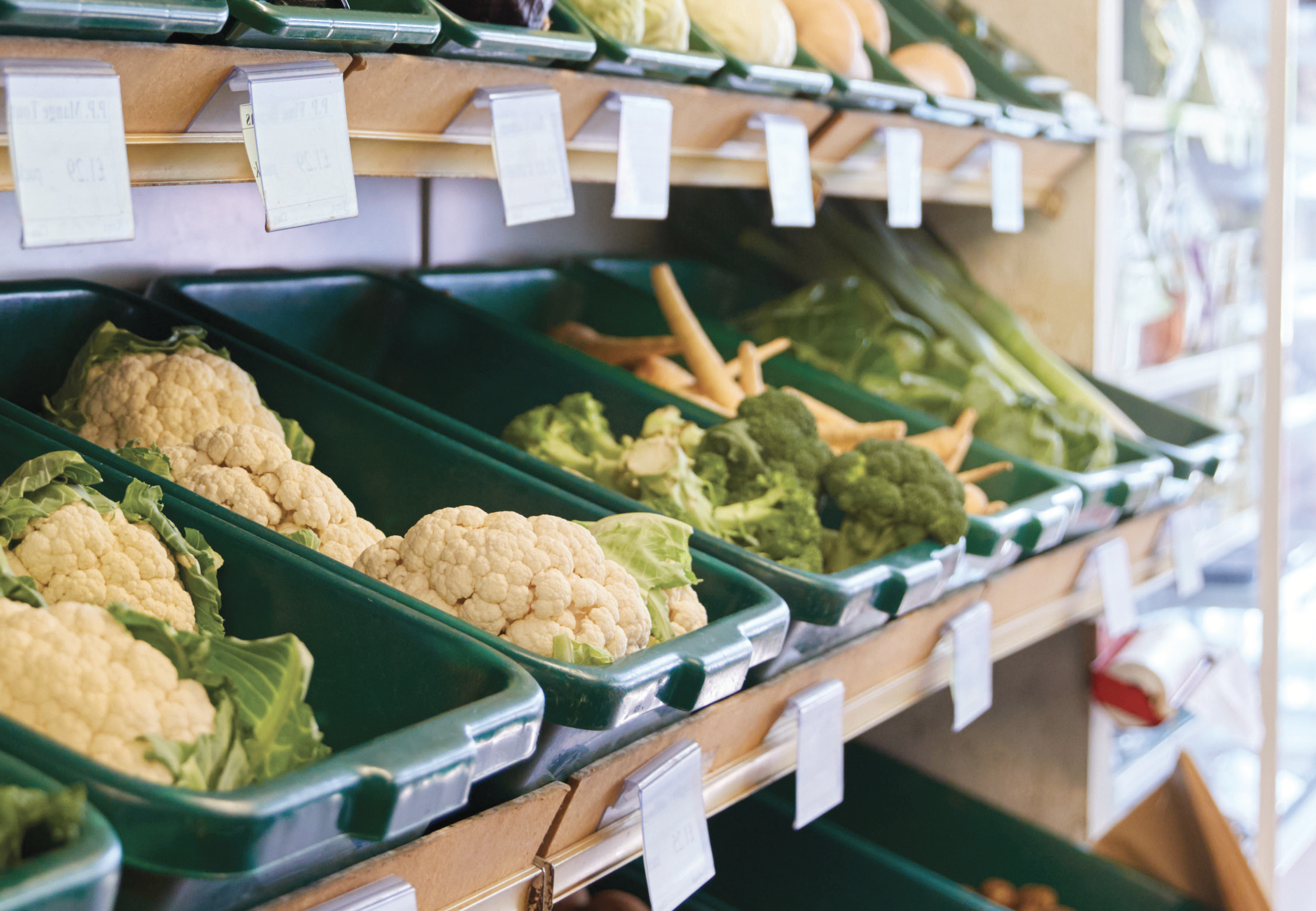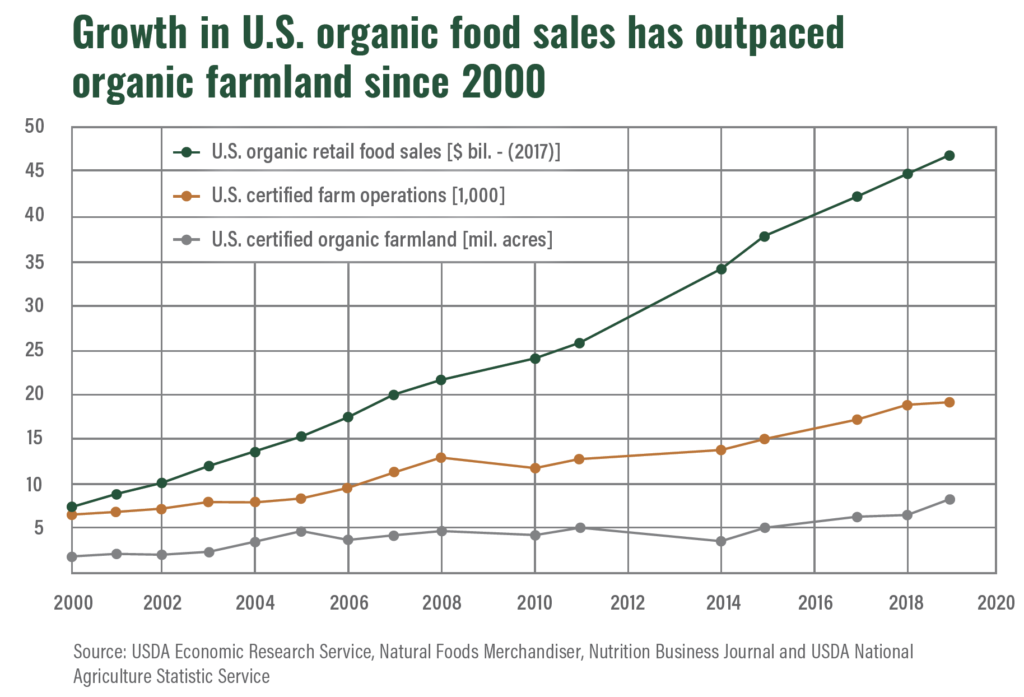
Apr 8, 2021
USDA outlook bright for organic produce
The produce-driven organic food industry weathered the pandemic remarkably well, and investment in research of organic may be part of the solution for increased growth.
Economists, researchers and industry officials shared their insights in late February during the USDA’s Agricultural Outlook.
In a session with the media, USDA Chief Economist Seth Meyer said that specialty crops generally weren’t doing as well as traditional “corn-belt” crops in terms of cash receipts.

Asked if growers would transition more acres to organic to increase the value of their crops, he said, “whatever consumers continue to demand, those growers in the United States will continue to produce it.”
A breakout session on organics later in the virtual event painted an optimistic picture of organic agriculture – and especially organic fruits and vegetables.
A reason why

Andrea Carlson, an economist for the USDA’s Economic Research Service, presented a variety of market data about the organic food sales, displaying charts showing the program’s rise from humble beginnings in 2002 to nearly a $50 billion industry in 2020 – one constant over the years has been how fruits and vegetables have dominated the category.
A review of social science literature shows a few insights into why customers have chosen organic foods.
“For demographics, we find that organic consumers cut across all incomes, educations and ages and ethnicities,” Carlson said. “However, younger shoppers are more represented than older shoppers, and we also find that households with younger children are more represented in organic consumers. The most common reason motivating shoppers to shop organic is “a belief that organic is safer, or a desire to avoid pesticides and non-therapeutic antibiotics.” Other shoppers believe the food is simply more nutritious and sustainable.
Produce during pandemic

Organic Trade Association CEO Laura Batchta went over more recent numbers on organic sales, data on retail checkouts scans via the consulting firm SPINS.
Organic sales were growing by 12% at the end of 2020, compared to just 5% at the end of 2019, she said. A big spike occurred in the middle of the pandemic as consumers packed their pantries in a buying frenzy.
It wasn’t just fresh sales – frozen organic fruits and vegetables had 23% growth at the end of 2020, she said, while shelf-stable fruits and vegetables had 18% growth at the end of 2020.
“This is really reflective of folks spending a larger portion of their time at home and a larger number of their meals being prepared at home, and as a result, that’s created a spike in the growth in sales of organic in retail,” she said. “When families are cooking more at home, and eating more at home, they’re buying more organic. And we know that organic has always been food for home. And when people have control over diets, they will select organic at the grocery store.”
Organic foods didn’t seem to be as heavily impacted by the closure of foodservice outlets. But they also couldn’t surge to meet demand as quickly as traditional farmers.
“With organic, you can’t just flip a switch, you have a three-year transition period for land to come into organic and you have facilities that need to be certified organic, all the way from the farm to the co-packer, the packinghouse,” Batchta said. “This has held back sales even with these great growth rates in organic. We heard reports of products being on what’s called ‘allocation’ for good parts of the middle of 2020, meaning that manufacturers and growers and packers and shippers of product were allocating portions of their volume to different retailers and never being able to fill the entire orders that were coming in because there just wasn’t more product.”
Investing in organic

Mathieu Ngouajio, who is the national science liaison for plant systems at the National Institute of Food and Agriculture (NIFA), spoke about federal funding for organic agriculture.
“We are not investing enough in research and development,” Ngouajio said. “We need to really invest in organic agriculture if we want to sustain the growth.”
But, he reminded the audience of the good news: USDA NIFA has two specific programs at NIFA that allocate funds specifically for organic agriculture: Organic Agriculture Research and Extension Initiative (OREI) and Organic Transitions. The 2018 Farm Bill called for the funding to OREI to more than double, from $20 million in 2018-2019 to $50 million by 2023.
And those programs are already bearing good fruit. Ngouajio highlighted one such project, the Northern Organic Vegetable Improvement Collaborative, a project spearheaded by Jim Myers of Oregon State University. The project, which received $6.3 million from OREI in addition to other projects involved numerous academics and held more than 80 events and presentations in 19 states. More than 30 organic farmers were involved in the project.
“This is one thing we want to see in organic agriculture projects: people working directly with farmers so that they can find out results,” Ngouajio said.
For future projects, NIFA is looking into smart tools for use by farmers and processors, and also smart tools for use by organic registration enforcement agents. It also wants to better understand the human dimension of organic agriculture and make its research accessible to growers, he said.
“Research is the number one challenge for growing the organic sector,” Ngouajio said when asked about future challenges. “And under that big tent, I would see pest management, controlling weeds, insects, diseases – putting the right tools in the hand of our growers – as an important challenge.”






